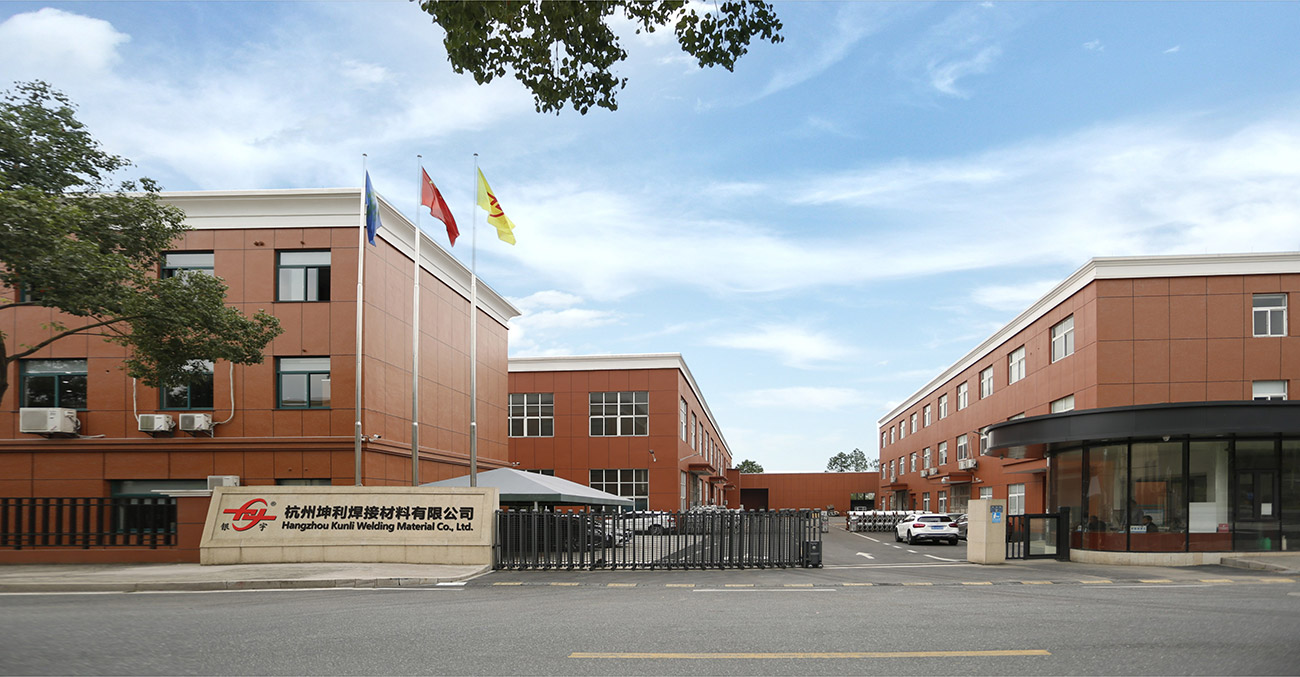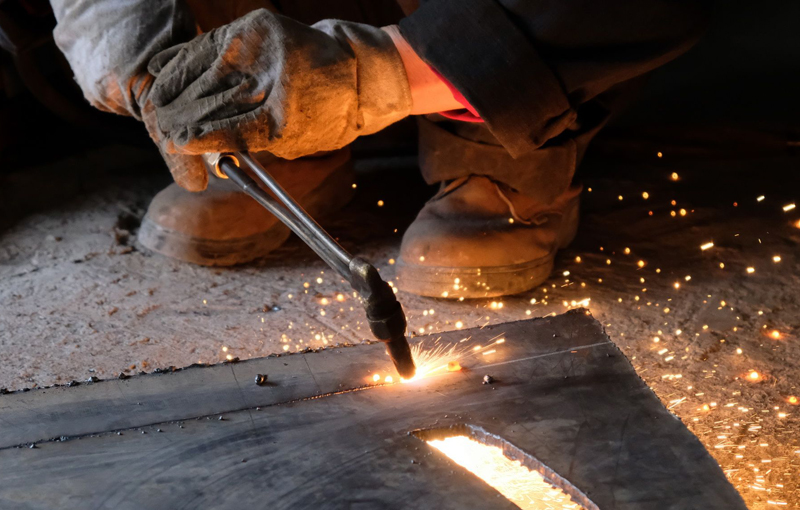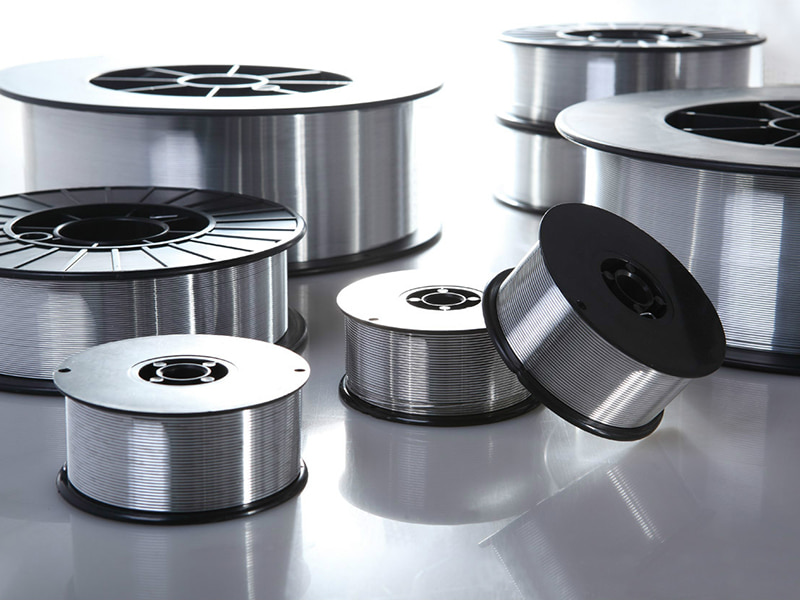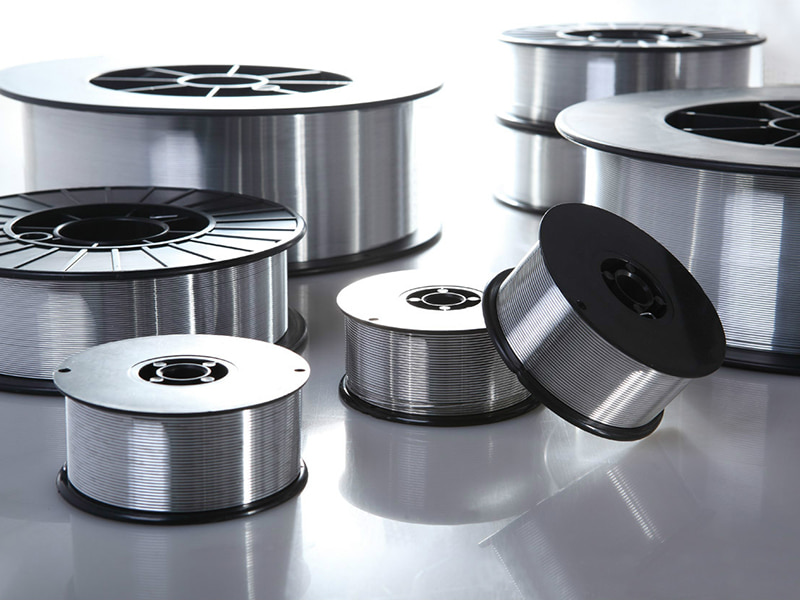Aluminum Welding Wire
ER4043 Silicon Aluminum Welding Wire
4043 is a 5% Silicon Aluminum filler metal which has excellent flowability and penetration characteristics, recommended for welding Aluminum alloys with maximun 2% alloys element and for Aluminum alloys containing up to 7% of Si, such as 2014,3003,3004, 5052, 6060,6061,6063 and 6082. Mainly used in chemicals, molds, furniture, storage boxes, containers and other industries.
ER4043 Silicon Aluminum Welding Wire - Precision Alloy for Aluminum Fabrication
Product Features
- Composition Stability: Contains approximately 5% silicon, ensuring consistent melting characteristics and reduced cracking in aluminum welds.
- Corrosion Resistance: Offers enhanced resistance to oxidation and environmental corrosion in welded aluminum structures.
- Weldability: Optimized for MIG and TIG welding processes, providing stable arc performance and smooth bead appearance.
Product Description
The ER4043 Silicon Aluminum Welding Wire is engineered for joining aluminum alloys where moderate strength and excellent corrosion resistance are required. Its formulation ensures predictable melting behavior, minimizing defects such as porosity and hot cracking in structural and fabrication applications.
Manufactured according to ASTM B 231 standards, this welding wire undergoes stringent quality control, ensuring uniform chemical composition and mechanical consistency. It is suitable for applications in automotive, aerospace, and industrial fabrication sectors, where controlled welding performance and alloy integrity are essential.
Technical Specifications
| Property | Specification |
| Alloy Type | ER4043 |
| Silicon Content | 4.5-5.5% |
| Aluminum Balance | Remainder |
| Diameter | 1.2 mm / 1.6 mm / 2.0 mm |
| Welding Process | MIG / TIG |
| Standard | ASTM B 231 |
Application Areas
This product is suitable for the following industrial scenarios:
- Automotive body panels and structural welding
- Aerospace aluminum component fabrication
- Construction and architectural aluminum structures
- Marine and environmental corrosion-resistant aluminum projects
FAQ
What aluminum alloys are compatible with ER4043 welding wire?
ER4043 welding wire is compatible with 5xxx and 6xxx series aluminum alloys. It is especially recommended for aluminum components that require moderate strength with enhanced corrosion resistance.
Can ER4043 be used for both MIG and TIG welding processes?
Yes, ER4043 is formulated to provide stable arc performance in both MIG (GMAW) and TIG (GTAW) welding applications, delivering smooth bead appearance and minimal defects.
How does silicon content affect weld quality?
The silicon content of approximately 5% reduces the risk of hot cracking, improves fluidity during welding, and contributes to better dimensional stability of the welded aluminum structure.
ER4043 Silicon Aluminum Welding Wire
Coming From China,
Marketing To The World.

-

30+
USED IN HEAVY INDUSTRY TECHNOLOGY SECTOR
-

35
YEARS OF RESEARCH AND DEVELOPMENT EXPERIENCE
-

200+
COOPERATIVE LARGE-SCALE R & D INSTITUTIONS
-

20+
GLOBAL TRADE COUNTRIES AND REGIONS
Coming From China,
Marketing To The World.
More than 90% of our field operators have professional and technical education background, and have many years of experience in equipment processing and assembly. It is precisely because of this united, dedicated, pioneering, skilled and experienced team that the company's technology and products can be continuously updated and improved.

Send Us a Message?
Related Products
-
 View More
View More
5154 Aluminum Alloy Welding Wire
-
 View More
View More
ER4043 Silicon Aluminum Welding Wire
-
 View More
View More
ER4047 Aluminum Mig Welding Wire
-
 View More
View More
ER5154 Al-Mg Alloy Wire
-
 View More
View More
ER5087 Magnesium Aluminum Welding Wire
-
 View More
View More
Aluminum Welding Wire ER5183
-
 View More
View More
ER5356 Aluminum Welding Wire
-
 View More
View More
ER5554 Aluminum Welding Wire
-
 View More
View More
ER5556 Aluminum Welding Wire
-
 View More
View More
ER1100 Aluminum Welding Wire
-
 View More
View More
ER5754 Aluminum Welding Wire
-
 View More
View More
ER2319 Aluminum Welding Wire
::: Last News :::
-
Choosing the Right Aluminum Alloy Welding Wire
Dec 19, 2025
Across fabrication and repair shops, consistent consumable quality directly affects weld outcomes, and Aluminum Alloy We...
-
Guide to Industrial Aluminum Welding Wire — The Basics
Dec 17, 2025
In welding tasks across fabrication, maintenance, and production sectors, the durability, cleanliness, and overall quali...
-
Why ER4943 Differs from Common Aluminum Fillers
Dec 15, 2025
Aluminum Welding Wire ER4943 stands as a workable filler material for diverse fabrication and repair duties, uniting wel...
-
What is Aluminum Braided Wire and Where is it Commonly ...
Dec 12, 2025
Aluminum Braided Wire Manufacturers are central to supplying flexible, lightweight conductors for a wide range of power ...
Industry Information Extension
More Information About ER4043 Silicon Aluminum Welding Wire Suppliers
Practice of ER4043 welding wire in repairing casting defects: from theory to field operation guide
I. Theoretical basis of ER4043 welding wire repairing casting defects
Applicability analysis
Material matching: compatibility of ER4043 (containing 5% silicon) with common cast aluminum alloys (such as A356, ADC12), reducing the risk of thermal cracks.
Flowability advantage: Silicon element improves the fluidity of the molten pool and is suitable for filling irregular defects such as pores and shrinkage holes in castings.
Core challenges of repair
Risk of welding pores caused by the porosity of castings;
Softening problems in the heat-affected zone (HAZ);
Deformation or secondary cracking caused by residual stress.
II. Key steps and technical points of field operation
1. Defect pretreatment
Cleaning: Use acetone or special solvent to remove oil stains and mechanically grind the oxide layer (avoid chemical cleaning residues).
Defect grooving: Bevel the pores/cracks (V-groove is recommended, angle 60°-70°) to expose fresh metal.
2. Welding parameter optimization
| Parameter | Recommended Range | Notes |
|---|---|---|
| Shielding Gas | Pure Ar (99.99%) | Flow rate: 15-20 L/min |
| Current Type | AC TIG or Pulsed MIG | AC removes oxide layer, pulsed mode reduces heat input |
| Preheat Temperature | 150-250°C (for large castings) | Prevents rapid cooling cracks |
| Interpass Temperature | ≤100°C | Avoids overheating and softening |
3. Welding skills
Hole filling strategy: segmented jump welding (2-3cm interval) to reduce local heat accumulation.
Arc closure treatment: current attenuation function to avoid arc crater cracks, add filler metal to fill if necessary.
III. Typical casting defect repair cases
Case 1: Engine cylinder block air hole repair
Problem: A356 cylinder block pouring air hole (diameter 3-5mm).
Solution: TIG welding + ER4043, preheating 200℃, low current (90-110A) layered cladding.
Result: X-ray detection shows no unfused, and the surface meets the standard after machining.
Case 2: Die casting mold crack repair
Challenge: ADC12 mold thermal fatigue crack (depth > 2mm).
Key points: Drilling crack stop holes at the end of the crack, MIG pulse welding (wire feeding speed 5m/min).
Ⅳ. Post-weld treatment and quality verification
Stress relief:
Vibration aging or 250℃×2h annealing (select according to the purpose of the casting).
Detection method:
Visual/penetrant inspection: surface cracks;
X-ray/ultrasonic: internal defects;
Hardness test: The difference between HAZ and base material is ≤15HB for qualified.
Ⅴ. Common problems and solutions
Problem 1: Many pores in the weld
Check gas purity, workpiece humidity, and increase preheating temperature.
Problem 2: Poor post-weld processing
Control silicon segregation to avoid excessive heat input leading to coarse grains.
 English
English Deutsch
Deutsch
 English
English Deutsch
Deutsch













